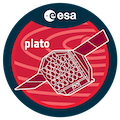Speaker
Description
Earth-sized extrasolar planets orbiting in the habitable zones of solar-like stars are prime targets to look for evidence supporting the existence of life on other planets in the Universe. However, until now neither radial velocity nor transit photometry techniques were precise enough to detect and characterise a potential signal stemming from an Earth-twin. With the launch of the PLATO (PLAnetary Transits and Oscillations of stars) mission, planned in 2026, this will change. To test the expected performance of the instrument and gain insights on how to correctly deal with PLATO data, we have simulated PLATO light curves of the Sun transited by Earth. We used real data observed by the Solar Dynamic Observatory (SDO) to quantify the effects of stellar activity, especially of granulation and oscillations. We then injected artificial Earth-Sun-like transit events and inserted this combination of stellar and planetary signals into the PlatoSim-simulator. We ended up with a final light curve product, which contains the stellar activity noise, the instrumental noise and the planetary signal. In our study we present the results of employing a transit search algorithm on these light curves. We also test a variety of popular detrending techniques to check how well they perform at retrieving the injected transit depth, with the aim of learning on how to best detrend future PLATO light curves. Finally, we provide a statical study on how stellar and planetary parameters, such as stellar magnitude and impact parameter, affect the exoplanet detection rate and the precision of the retrieved transit depths.

